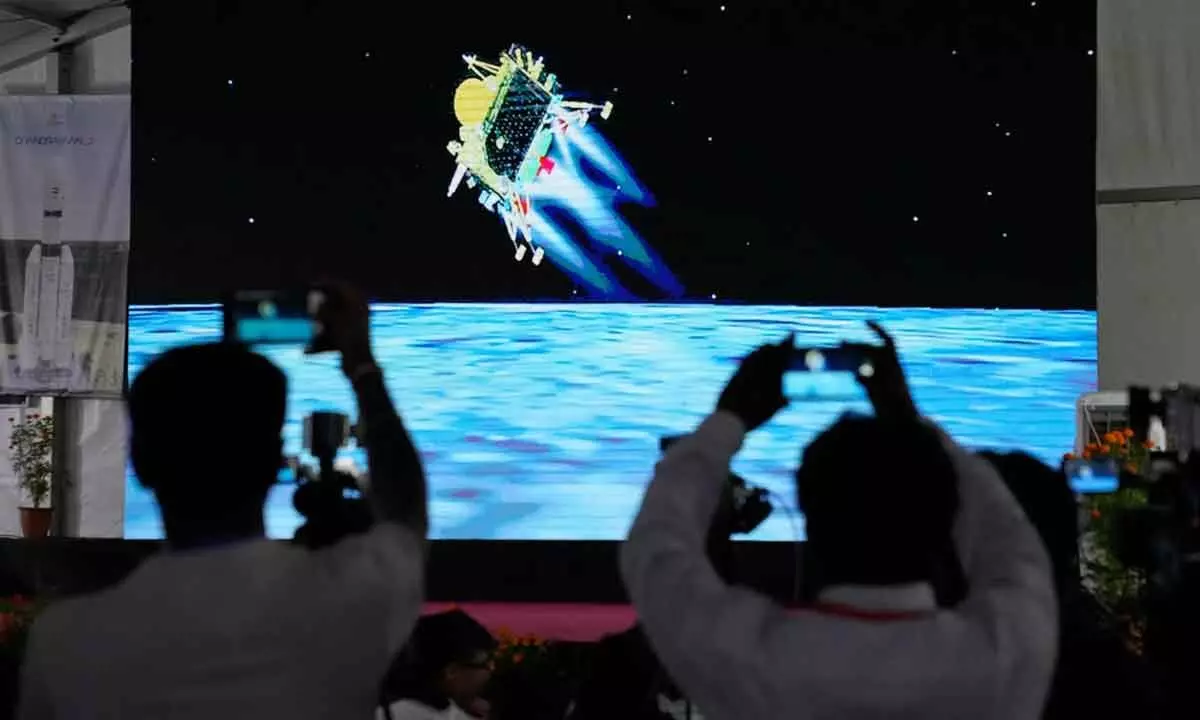Bharats Suryastra launched what will happen now?

After lift-off, Aditya L1's four-month-long voyage to the Lagrange point
After lift-off, Aditya L1's four-month-long voyage to the Lagrange point. According to the Indian Space Research Organisation (ISRO), the entire journey from the launch to reaching L1 is expected to take approximately four months for the Aditya L1 mission. Here is a breakdown of the journey to the Sun-Earth system's L1 point.
Launch: The Aditya L1 mission will be launched by ISRO's PSLV XL rocket from Satish Dhawan Space Centre SHAR (SDSC-SHAR), Sriharikota.
Initial Orbit: The spacecraft will be initially placed in a Low Earth Orbit.
Elliptical Orbit: The orbit will then be adjusted to become more elliptical.
Exit from Earth's Gravitational Sphere of Influence (SOI): The spacecraft will be propelled towards the L1 point using onboard propulsion. As the spacecraft moves towards the Lagrange point, it will exit Earth's gravitational Sphere of Influence
Aditya-L1 Launch: What happened today?
Event 1: Rocket Core Technology (RCT) Ignition - Time: -3 seconds
Event 2: Payload Stage 1 (PS1) Ignition - Time: 0 seconds
Event 3: Payload Separation Ordnance Module Extra Large (PSOM XL) 1,2 (Ground-Lit) Ignition - Time: 0.42 seconds
Event 4: Payload Separation Ordnance Module Extra Large (PSOM XL) 3,4 (Ground-Lit) Ignition - Time: 0.62 seconds
Event 5: Payload Separation Ordnance Module Extra Large (PSOM XL) 5,6 (Air-Lit) Ignition - Time: 25.0 seconds
Event 6: Payload Separation Ordnance Module Extra Large (PSOM XL) 1,2 (Ground-Lit) Separation
Event 7: Payload Separation Ordnance Module Extra Large (PSOM XL) 3,4 (Ground-Lit) Separation - Time: 70.1 seconds
Event 8: Payload Separation Ordnance Module Extra Large (PSOM XL) 5,6 (Air-Lit) Separation - Time: 92.0 seconds
Event 9: Payload Stage 1 (PS1) Separation - Time: 109.40 seconds
Event 10: Payload Stage 2 (PS2) Ignition - Time: 109.60 seconds
To be achieved
Event 11: Control Logic and Guidance (CLG) Initiation - Time: 114.60 seconds
Event 12: Payload Fairing (PLF) Separation - Time: 204.40 seconds
Event 13: Payload Stage 2 (PS2) Separation - Time: 262.38 seconds
Event 14: Payload Stage 3 (PS3) Ignition - Time: 263.58 seconds
Event 15: Payload Stage 3 (PS3) Separation - Time: 581.42 seconds
Event 16: Payload Stage 4 (PS4) Burn-1 Ignition - Time: 1493.52 seconds
Payload Stage 4 (PS4) Burn-1 Cut-off - Time: 1523.38 seconds
Event 18: Payload Stage 4 (PS4) Burn-2 Ignition - Time: 3127.52 seconds
Event 19: Payload Stage 4 (PS4) Burn-2 Cut-off - Time: 3599.52 seconds
Event 20: Aditya-L1 Separation - Time: 3799.52 seconds
Event 21: Monomethylhydrazine (MON) Passivation Start - Time: 4042.52 seconds
Event 22: Monomethylhydrazine (MMH) Passivation Start - Time: 4382.52 seconds
Which are critical phases of Aditya L1 journey?
According to Syed Ahmed, a former ISRO NASA scientist now working at XDLINX labs in Hyderabad, the Aditya L1 mission presents unique challenges despite the PSLV's impressive track record of 37 consecutive successful launches. This complexity arises from the four-stage propulsion process, transitioning from solid to liquid stages, with each stage requiring flawless ignition and performance.
Any misfire or failure to ignite would take it straight down into Bay of Bengal.:
Somak Raychaudhury, an eminent astrophysicist currently serving as vice-chancellor at Ashoka University, explains that unlike Chandrayaan, where one used the Earth as a slingshot and then captured by the Moon, here, we can't do that because it is going to orbit an empty point and thus it's not going to be pulled by something there.
“So the critical stages will be when it will leave the Earth's orbit and when it will go around, reach the Lagrangian point and be put into the L1 point's orbit,” he told HT.
Syed explains that the ultimate phase of the mission occurs approximately 100 days into the journey, covering a distance of roughly 1.5 million kilometres—four times the distance between Earth and the Moon. During this stage, the Liquid Apogee Motor (LAM) must fire precisely to position the spacecraft into its designated halo orbit around the Lagrangian point.















